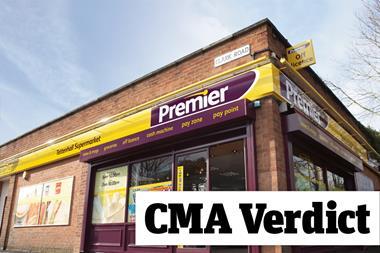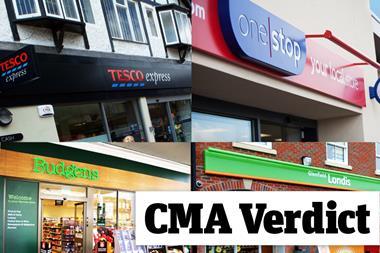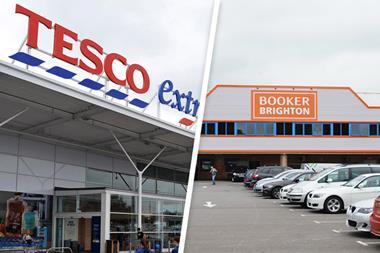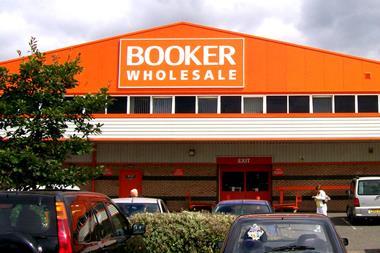
The Competition and Markets Authority (CMA) has today opened its phase two investigation into the proposed mega merger between Tesco and Booker.
The probe – long expected and indeed called for by the two parties themselves – will be conducted under the CMA’s fast-track procedure and assess if the merger will lead to reduced competition in the UK grocery market.
In deciding whether the merger can go ahead (and, crucially, on what terms), the CMA will focus on 350 local hotspots.
These are areas where there is currently an overlap between Tesco stores and Booker-supplied stores. The CMA believes shoppers in these areas could face worse terms if the merger goes ahead.
Read more: ’Owning wholesale will embed the big four in almost total dominance’
“There are concerns that, after the merger, there is potential for Booker to reduce the wholesale services or terms it offers the ‘symbol’ stores it currently supplies, in order to drive customers to their local Tesco,” the CMA says.
| MOST UNDER THREAT LOCATIONS - BY REGION | |
| Region | Count |
| East Anglia | 24 |
| East Midlands | 17 |
| North | 12 |
| North West | 14 |
| South East | 55 |
| South West | 27 |
| West Midlands | 13 |
| Yorkshire and Humberside | 21 |
| Wales | 42 |
| Scotland | 21 |
| Most under threat | 246 |
Where are those hotspots?
The CMA doesn’t name the areas it’s concerned about, but earlier this year The Grocer revealed exclusive research by Maximise UK – which is run by David Haywood, a veteran of the Safeway-Morrisons deal and the Co-op’s acquisition of Somerfield – which identified 400 Tesco and Booker stores that are either within a one-mile radius or a five-minute drive of each other. Of those, 246 stores are both within the specified radius and a five-minute drive.
“With 246 sites failing both tests I believe these are by far the most vulnerable in terms of having to be sold off and the CMA will be trying to establish the merits of what can be kept or sold to competitors,” Haywood told The Grocer at the time. ”I’m pretty sure Tesco will have to sell stores.”
Maximise also specified which areas around the country it thought were most at risk, with the South East coming out top with a potential 55 overlapping Tesco-Booker stores (see table).
Tesco and Booker have always insisted they do not believe there is a competition issue around store numbers. “We’re not acquiring more stores,” Tesco CEO Dave Lewis said earlier this year. ”We’re very confident that when the competition authorities have considered the deal they will come to the same conclusion as we did in our due diligence - that there isn’t an issue.”
Other areas of concern
The CMA also said today ”there are concerns that, after the merger, there is potential for Booker to reduce the wholesale services or terms it offers the ‘symbol’ stores it currently supplies, in order to drive customers to their local Tesco”. This came as surprise to HSBC analyst Dave McCarthy who argues that previous CMA reviews such as ”Booker Musgrave and Costcutter P&H suggested that barriers to switching in symbol groups are low and so parties would not have the ability or incentive to increase retail prices, reduce the quality of members’ retail offer at a local level, or facilitate coordination at the retail level”.
It is not clear what other issues the CMA will be looking at as part of the phase two probe. The watchdog said this morning that while there had been other concerns raised and considered in phase one, it had not found it necessary to conclude on all of these given the ‘fast track’ referral.
Many of Booker’s wholesale and convenience rivals have provided detailed submissions on the impact the deal will have on the market and so it will be interesting to see how much of these will be taken into the next phase
The CMA’s phase two review is now scheduled to run for 24 weeks, with the final report due to be published before Christmas.



















No comments yet